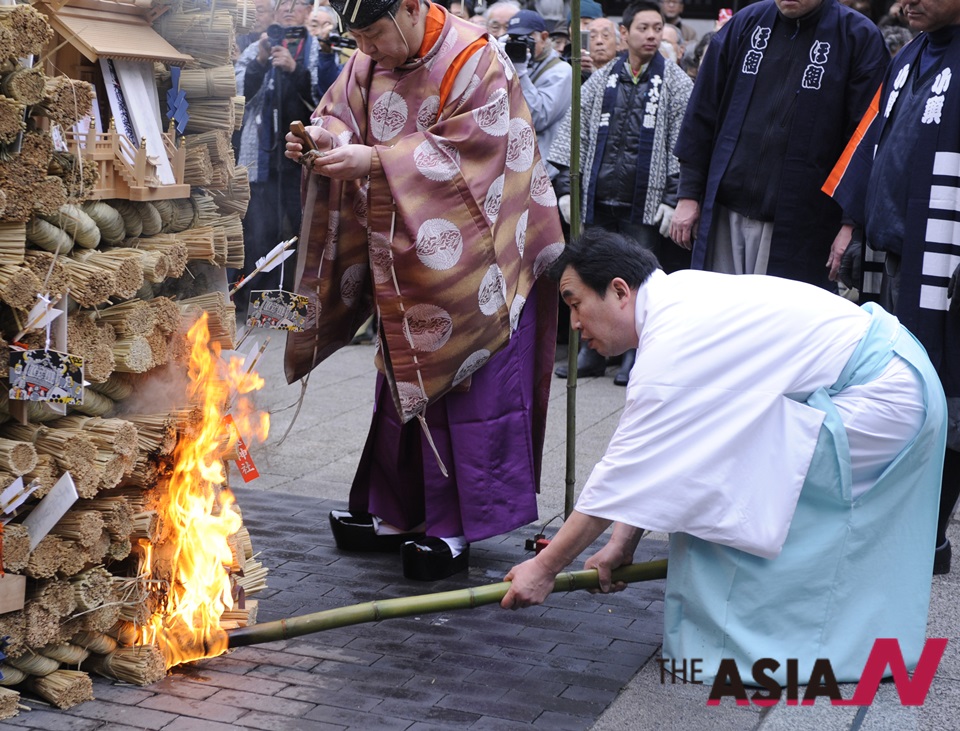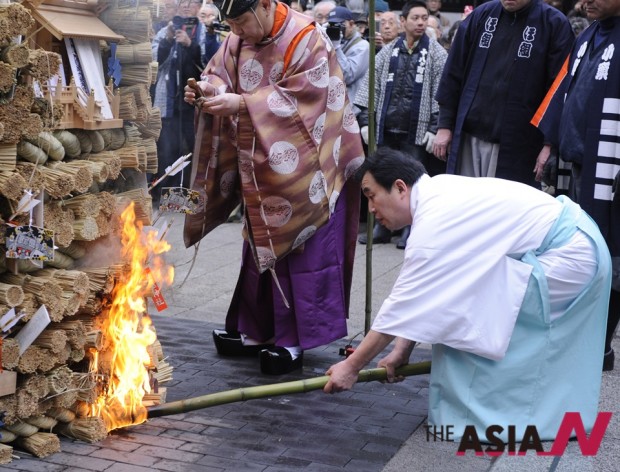
The first month of Shinto’s country, Japan

Celebrated in the first of January, the Japanese New Year’s Day is a day of celebration to welcome the god Toshigami. Toshigami is a god in the Shinto religion, the spirit of the new year.
Preparations come extensively in welcoming Toshigami. One of the things that people prepare is kadomatsu, a traditional Japanese decoration for the New Year. Kadomatsu is made of pine and bamboo and is usually placed to where the god is believed to be staying.
The period of decoration is called matsunouchi, believed to be the time that the god stays. At the front gate of a temple, people hang a rope called shimenawa in order to divide the outer world from the temple. This rope is burnt with gakijome, the first writing of the year where people write their wishes for the year ahead. People also bake rice cake with this fire and use ashes to prevent diseases by scattering these ashes around the house, according to superstition. People think that burning this will allow the passage of the god to where it came from.
When the burning event goes well and the burnt paper goes high in the air, it is assumed to bring luck to people’s houses. Japanese prepares a rice cake for Toshigami, served in various sizes with tangerines and dried persimmon. The rice cake is called kagamimochi, copying Japanese imperial regalia composed of three things: a mirror, a marble and a sword that the sun god gives to his grandson.
Kagamimochi defers according to the different regions but it is usually consumed on 15th or 20th of January or November. When it is consumed, kagamimochi is divided with hands or a hammer rather than a knife. Japanese refuses to use a knife since knife symbolizes a disembowelment. Moreover, Japanese use the word ‘opening’ rather than ‘cutting’ or ‘breaking’, an action called as kagamibiraki, literally meaning ‘breaking the mirror’. The mirror refers to the rice cake kagamimochi. Red bean porridge or rick cake soup is made from the kagamimochi. Ko Sun-yun Professor at Baekseok Arts University | Summary by Lho Ji-young




